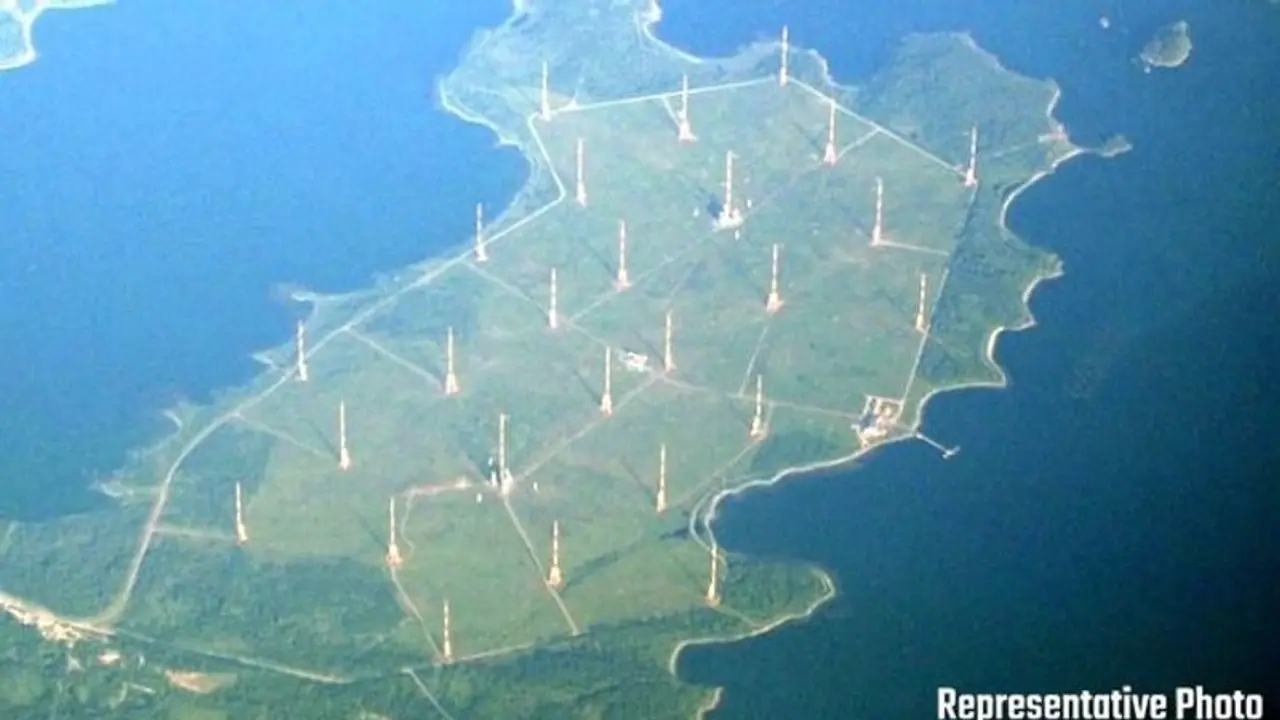The Indian Navy contends that the site selection underwent scientific evaluation, environmental impact assessments, and strict compliance with safety standards. Sources assert that the project is crucial for national security and aims to balance strategic needs with environmental preservation
Claims that the Indian Navy's second state-of-the-art Very Low Frequency (VLF) Communication Station in the Vikarabad district of Telangana could have ill effects, either on humans or on the flora-fauna of the area, sources have told Asianet Newsable. According to sources, ever since news broke out of the project, a few misconceptions were being reported with respect to the radiation and its effect on the flora-fauna of the area.

The Indian Navy, based on the experience of operating a similar station in Tamil Nadu, clearly brought out in its presser a few weeks ago that they fully understand the apprehensions of the local populous and assured that there are no observed ill-effects, either in humans or on the flora-fauna of the area, sources said.
Professor K. Purushottam Reddy, an environmentalist affiliated with the Damagudem Forest Protection Committee, clarified the committee's stance regarding the Indian Navy project. He emphasized that their concern is not directed against the Indian Navy project itself but rather its proposed location within a forest area containing more than 1.2 million trees of various sizes.
Furthermore, Reddy highlighted that Damagudem is situated in the Anantagiri hill range, marking the origin of the River Musi, a tributary of the Krishna River. He underscored the historical significance of the River Musi, which has served as a vital water source for over a century, notably supplying water to the Osman Sagar reservoir on the outskirts of Hyderabad. Reddy expressed apprehension that the radiation emitted from the radar station could potentially impact the quality of the river water, raising concerns about its long-term environmental implications.
However, the Navy says that the 2900 acres of forest land, part of the Damagundam Reserve Forest, has been chosen after scientific survey.
The Indian Navy has, over a period of time evolved into an important global naval power and hence the requirement of long-range communication is indispensable. This project has fructified after protracted deliberation spanning more than 10 years.
The Navy has been operating a similar communication station in Tamil Nadu's Tirunelveli district since 1990. In fact, it is a testimony to the Indian Navy's safety operating standards that about 1800 people have resided in a similar naval station without any ill effects on their health for the past 34 years.
The extant project has also achieved environmental safety norms by undertaking an Environmental Impact Assessment (EIA) which has been cleared by the Ministry of Environment and Forests (MoEF) while stipulating strict monitoring for compliance, sources said.
As against the claimed 12 lakh trees, less than 1000 trees are planned to be cut, sources said, adding that more than 50% of the total area would be maintained and fenced as forest land to maintain the biodiversity and ecological balance.
The afforestation being undertaken in and around Vikarabad is much more than the deforestation in the Damagundam reserve forest, thereby attaining an overall ecological balance in the area.
The Very Low Frequency (VLF) transmitters operate in a radio frequency band of 3 to 30 KHz with wavelengths from 10 to 100 km and thus are used for long-range communication. An area, affected by these radio signals, is clearly demarcated in the vicinity of the antennae as no entry zone.
No effect would be felt outside the demarcated area where these waves are completely harmless to human beings and fauna, as is the case with all such transmitters. sources further said.
This project is of national and strategic importance and is essential to meet the security requirements. The project aims to strike a balance between the Indian Navy's strategic requirements and its alleged impact on the environment. The Indian Armed Forces have wholeheartedly involved and taken the local population along while following all the guidelines for maintaining the ecological balance in their projects across the nation, sources added.
Image Courtesy: jaksti/Flickr
